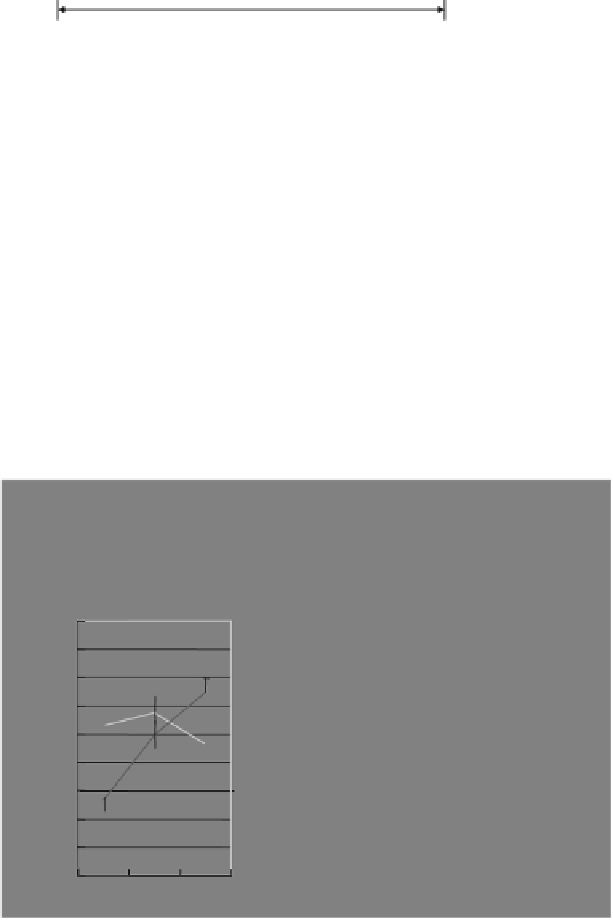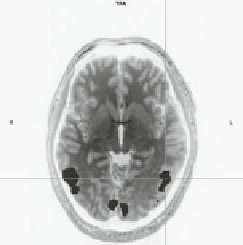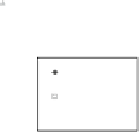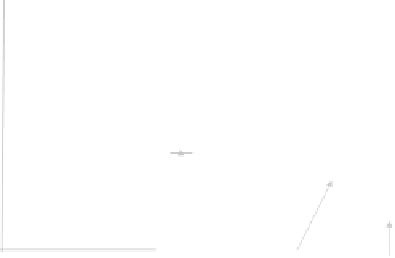Biomedical Engineering Reference
In-Depth Information
Static Pattern
Moving Pattern
OnTime:7ms
OnTime:7ms,
Jump time 50ms
(fast movement)
Stimulation
Scheme
1.5
sec
6
sec
30
sec
Fig. 11.4. Paradigms for MT activation. Bars are two degrees of visual angle. Paradigm
I is flicker pattern, flashed once. Paradigm II is a moving pattern in which two bars were
jumped with the speed of 4 degrees per 50 ms. Paradigm III is a repeated moving pattern
of paradigm II with 200 ms ISI. One event consisted of 4 repetitions with 1.5 s lap-time.
the last of the bar set to the first of the second set) ISI, which was
to induce a refractory response. Paradigms were repeated 4 times
with a lap-time of 1.5 s making the period of total stimulation
6 s. Those paradigms were performed under a high contrast
condition (90%) relative to the background and a low contrast
condition (40%).
In V1 and MT, the difference between the responses in
paradigm I and paradigm II was small under the high contrast
condition (
Fig. 11.5
). Response trend in V1 with paradigm I, II
and III were different from in MT. The responses in V1 increased
FS: Paradigm
I
(flicker)
MS: Paradigm
II
(moving single)
MW: Paradigm
III
(moving double, ISI 200 msec)
1.8
1.6
1.4
1.2
MT_HC
MT_LC
V1_HC
1
0.8
0.6
0.4
0.2
0
FS
MS
MW
MT
V1
Fig. 11.5. Activation maps and paradigm-dependent BOLD signals at V1 and MT. HC:
High contrast condition, LC: Low contrast condition.











































